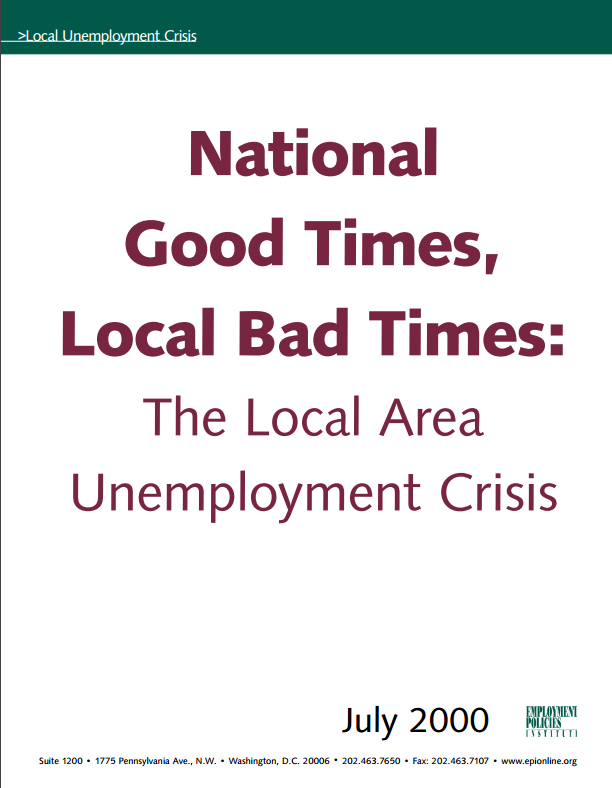In the midst of the national economic boom, regional pockets of the economy are surprisingly weak. The following list comprises counties and cities (each with a population of at least 10,000 people) struggling with unemployment rates that are more than twice the national average. These localities are encountering great difficulty keeping their citizens productively employed. They face even greater challenges moving low-skilled people from welfare to work. Federal mandates on wages ignore these local labor market conditions and undermine governors’ chances for success under welfare reform. A federally determined minimum wage cannot be sensitive to the varied economic conditions in these areas. On the contrary, these numbers support a powerful argument favoring State Flexibility on the minimum wage.
Policy Implications
The 191 counties and cities identified here are encountering difficulty keeping many citizens productively employed. For national policy makers, these pockets of economic distress are important. All too often, federal policy takes a one-size-fits-all approach that assumes labor markets across the country are uniform. They’re not. The counties and cities cited here could suffer enormous economic damage if the federal government implements policies that lack the flexibility needed to deal with local or regional economic variations.
Congressional proposals that raise labor costs would have a disproportionate impact in these areas. Likewise, federal polices targeted at boosting employment prospects would be extremely valuable in these counties and cities that need the most help. With any policy, Congress should make sure these communities do not wind up any further behind than they already are.
